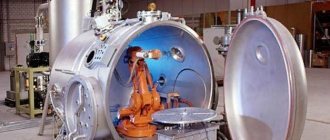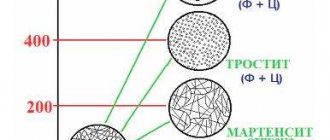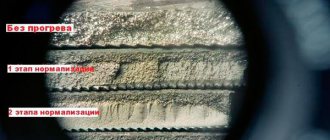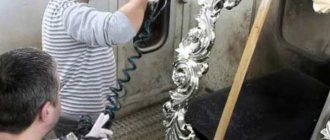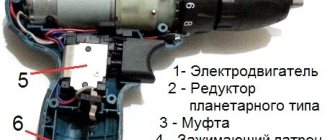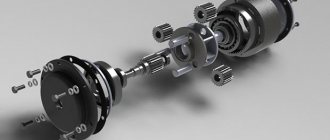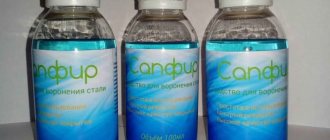What is the copper plating process?
Copper plating is the process of applying a thin layer of copper to the surface of an object. It is performed by the galvanic method, that is, by transferring copper ions from a positively charged source to a negatively charged surface to be treated. Most often, the process of electroplating copper is a preparatory step before plating with nickel and chromium, but often copper plating of metal becomes an independent type of finishing. Electroplating, which requires the creation of a copper coating, is widely used.
Why is copper plating of metals carried out?
Copper plating is the application of a thin layer of copper to various materials and products. Typically the thickness of this layer is 1-300 microns. It is copper that has a number of properties that make it suitable for this manipulation. It is plastic and lends itself well to polishing. The galvanic layer on steel after copper plating has almost no pores.
In addition, copper is characterized by high electrical conductivity and is easy to solder. When using high-frequency signals, the highest current density occurs in the copper layer (skin effect), and the overall resistance decreases.
The areas of application of copper plating technology are extensive:
- creating an intermediate layer before chrome and nickel plating of various products (to reduce the risk of cracking during operation in difficult conditions);
- application in electroplating;
- thick-layer coating of complex models and artistic designs, production of copies of various products;
- production of radio engineering and electrical parts - contacts, conductors, antennas, waveguides;
- applying a conductive layer to plastic products;
- protection of rolled metal, sheet iron, profiles.
Types of copper plating
There are two options for copper plating at home:
- With immersion of the workpiece in electrolyte.
- No immersion.
With immersion of the workpiece in electrolyte. To perform the procedure, you must have a container with electrolyte of sufficient volume. After preliminary preparation, which consists of cleaning the surface with sandpaper and rinsing it in a hot soda solution, the object is connected to the negative electrode and immersed in the electrolyte for a certain time.
Copper plating with immersion of the part in electrolyte
No immersion. Can process steel, aluminum, lead, zinc. Processing is carried out without immersion in a container; this option is usually used for large parts.
Both options are quite accessible for doing it yourself at home.
Copper plating of steel
Safety precautions
Copper sulfate is not a potent or hazardous substance, but it can cause an allergic reaction if it touches the skin. But sulfuric acid is quite dangerous to work with, so you only need to work with personal protective equipment - gloves, a respirator, goggles.
At the end of the work, neutralize the solution with soda and then dispose of it. If these measures are followed, the process proceeds quickly, without any particular difficulties and with excellent results.
Equipment and materials required for copper plating
To carry out copper plating of steel or other metals, you will have to stock up on some materials and devices. You will need:
- Hydrochloric acid.
- Copper sulfate (copper sulfate).
- Distilled water.
- A DC source, preferably with an adjustable voltage (LATR is one option), but a regular 6-12 V transformer will do.
- Container for electrolyte (optimally a glass reservoir).
- Two copper plates that can fit freely into the container.
- Connecting wires.
An electrolyte must be made from water, copper sulfate and hydrochloric acid. First, copper sulfate is added to the water until a saturated solution is obtained. It must be thoroughly mixed so that no solid particles remain. Then hydrochloric acid is added to the solution in a thin stream (not vice versa!). In total, to apply the coating you will need:
- Water - 980 g.
- Copper sulfate - 190 g.
- Sulfuric acid - 40 g.
Now everything is ready, you can start copper plating at home.
Attention! It is necessary to take into account that hydrochloric acid is a chemically active reagent, so you should stock up on protective equipment - gloves, goggles, and prepare the workplace as much as possible.
Another recipe for a solution for chemical metallization
You can prepare another recipe for chemical copper plating according to the order of dissolution sent by the user psychos from the RadioKot , where less reagents are taken and soda ash is not added. Potassium iron and thiocyanate and thiocyanate are also taken differently.
Solution composition:
CuS04*5H2O (copper sulfate) - 15 g. NiCL2*6H2O (nickel chloride) - 2 g. NaOH (sodium hydroxide, caustic soda) - 15 g. Trilon B - 30 gr. K3[Fe(CN)6] (potassium iron sulfide, red blood salt) - 0.01 g. (dilute 1 g of reagent in 100 ml of water, then take 1 ml of this solution with a syringe - this will be 0.01 g.) KNCS (potassium thiocyanate) - 0.01 g. (dilute 1 g of reagent in 100 ml of water, then take 1 ml of this solution with a syringe - this will be 0.01 g.) Formalin 20 ml/l. Distilled water - 1 l.
Dissolution order:
K3[Fe(CN)6] and KNCS in this video are not taken from the recipe above. Let me make a reservation, they can be added either according to the recipe or in the video.
Solution consumption
This solution also works well, the consumption is also 50 ml. per 1 dm.sq. boards, the stability of the solution after mixing with formaldehyde is 5..7 days. It works a little slower, but this does not affect the quality of the coating in any way.
Conclusion
Try both solutions and use whichever one you think is best for you.
This article also used the research of user mial on the topic of Metallization of holes from the Radiokot forum.
Happy metallized holes everyone.
Author of the article: Admin
If you liked the article, click on the button of the desired social network located below. With this action you will add an announcement of the article to your page. This will greatly help in the development of the site.
Copper plating technology
Procedure for applying the coating:
Galvanic copper plating scheme
- It is necessary to remove a thin film of oxides from the surface of the part to be processed. Sandpaper, wire brush or other abrasive materials are used. It is necessary to act very carefully, since severe damage to the metal will remain noticeable. Ideally, the surface should be polished.
- Then the product is thoroughly washed in a hot solution of soda ash. This action allows you to degrease the surface.
- The prepared product is connected to the negative electrode from the power source and placed in an electrolyte solution.
- Copper plates with a positive electrode from the power source (anode) attached to them are lowered into the electrolyte solution. It is necessary to ensure that the anode and cathode do not touch. Ideally, the distance between them should be the same in all areas, but in practice this is difficult to achieve.
- Copper plating of metal is carried out in several stages. It is recommended to remove the first layer of coating, obtained within a few minutes, and rinse the part again in a soda solution. This will strengthen the adhesion of the copper plating layer to the base metal. The part is kept in the solution for about 20–30 minutes. The thickness of the coating layer can reach 300 microns.
Metal deposition scheme
It is often necessary to remove the coating layer from chrome parts. To do this, a negative charge is applied to the part, and a cloth soaked in a solution of sulfuric acid (5%) is wrapped around the positive electrode. The surface of the part is wiped with it, the chrome plating layer is removed. When performing the procedure, it is necessary to protect the skin, vision and respiratory organs from acid vapors.
History of the discovery of copper
Copper is the first metal that was conquered by man and played the greatest significance in the history of the development of civilization. This event took place several thousand years BC, and the exact date of the beginning of the use of this unique metal could not be established.
In ancient times, copper nuggets were used mainly to create weapons and household tools. Red-green metal nuggets were initially used in the same way as ordinary stones. Later, through experience, people noticed that processing this material with a hammer gives it special properties. This is how cold metal forging was born.
Even later, it was discovered that the metal melts and, after cooling, takes on different shapes and properties. This stage was the initial stage in the development of hot metal forming.
Copper plating of parts without immersion in solution
Copper plating of an aluminum part without immersion in a solution
Galvanic copper plating can be performed without immersing the part in a container with electrolyte. To do this, you need to connect a negative electrode to it. A stranded copper wire is taken as a positive contact, the end of which is removed from the insulation by 1–2 cm and kneaded so that it looks like a brush.
To apply a layer of copper coating, the “brush” is dipped in electrolyte, then its end is passed along the surface of the part, without touching it, but trying to ensure that there is a layer between them. Constantly dipping the anode into the electrolyte, cover the entire surface with a layer of copper. The procedure requires skill and time, but the result is worth it.
New properties of steel after copper plating
Copper plating increases the corrosion resistance of steel and enhances its strength. Especially reliable will be a multilayer coating, which also includes layers of chromium or nickel on top of copper. If copper plating is done first, then the entire surface will be ductile and not prone to abrasion. It is impossible not to note the improved decorative properties of products after copper plating - they acquire a beautiful shine and an “antique” appearance.
Antique copper coating of products
Copper adheres reliably to the steel surface, but without additional protective measures it is not retained for long. The destruction of the copper layer occurs under the influence of temperature changes and atmospheric factors. Applying a special varnish to the product will help reduce the risk of cracking.
Electrotype
Electroforming process
Copper plating can be done on more than just metal objects. Electroplating is widespread, when copper plating is performed on various dried plants, insects and other non-metallic objects.
The coating technology differs little from the usual one, only at the beginning of the process it is necessary to apply an electrically conductive varnish to the surface. After the varnish coating has dried, the usual steps are to apply a layer of copper. The resulting products have high decorative or artistic qualities and are highly appreciated by viewers.
Related video: How to make copper plating with your own hands at home
Useful articles
Secrets of nickel plating metal objects at home
The process of chrome plating metal products at home
Technology for galvanizing at home
Characteristics and composition of copper
Copper is a heavy metal with a rose-red color, which is highly soft and melts at a temperature of more than 1080℃. The electrical conductivity of copper coating is 1.7 times higher than that of aluminum. Copper also has high thermal conductivity.
Many specific properties of the metal are due to the presence of various impurities in its composition. So, according to the oxygen that copper contains, the metal is divided as follows:
- copper without oxygen contains impurities of less than 0.001%;
- refined copper contains oxygen 0.001–0.01%;
- pure copper contains oxygen about 0.03–0.05%;
- General purpose copper contains 0.05–0.08% oxygen.
The presence of lead or bismuth in copper reduces the plasticity properties of the material. Slightly soluble impurities (sulfur, lead, bismuth) increase the fragility of the metal.
During the electrolysis process, in addition to oxygen, hydrogen can enter the composition of copper alloys.
volver-xc90 › Blog › We apply the lessons of chemistry and physics in everyday life. Copper plating of bolts for release.
This year I have planned a lot of work with Chipmunk.
The bulk of the parts need to be done in the spring. One of these jobs is to replace the rear muffler can.
I bought a used rear can from a 2009 car. It will have to be welded... but the old one needs to be disconnected in any case... I won’t weld it on a car. Why am I saying this...we need nuts and bolts.
I went to the market, but there were no copper-plated bolts. What kind of country is this?
I got a little upset and decided to galvanize the bolts, nuts and washers myself. The task is not particularly difficult... ordinary kitchen magic.
You need acid, copper sulfate, copper...well, and a source of constant current. I didn’t even try to look for pure acid. I bought regular, cheap battery electrolyte.
I bought copper sulfate at a gardening store.
I didn’t go somewhere to buy copper plates, I took a thick copper wire.
Nothing foreshadowed trouble))
When I tried to find ordinary, “black” bolts, nuts, washers in the store... I was faced with the fact that now everything is sold in zinc. Oh no no no. I looked through my bins and didn’t find anything either. In general, the galvanizing task has now been supplemented by the preliminary removal of zinc from nuts, bolts and washers.
Zinc can be removed in different ways... mechanically - in this case it’s not very convenient, burning it out is generally easy... throwing it in a grill, for example, or calcining it on a burner... but this will release the metal... I didn’t want to. I decided to remove the zinc chemically. If you throw a zinc-coated part into a container with acid, the acid will eat up the zinc...and quite quickly. To speed up the process and make the removal of zinc more uniform, I added electricity. The anode is a piece from which the zinc must be removed, suspended on a copper wire. The cathode is a metal plate. Well, the medium is an electrolyte.
Well, the main thing to remember here is: Working with acid requires increased care. We use gloves and protect our eyes. We work in a well-ventilated area (the procedure is toxic and explosive). When mixing acid with water...always add acid to water, not the other way around!
In general, by giving 2-3A of current, within 5-8 minutes we get a part cleared of zinc.
Prepare the solution. 100g electrolyte. 20g distilled water. 20g copper sulfate.
The parts, cleared of zinc, are finished with a metal brush, washed in an alkaline solution, and degreased.
Place copper wire in the jar with the solution and hang + on it. We hang the part on the copper wire connected to it.
To begin with, leave it like this without applying current for 5 minutes.
The parts will be covered with a micron layer of copper from the solution. And after that we give the current... I gave 20-30mA... for 10 minutes.
Now I’m thinking about what else to copper plate...or dezincify)
ps I stopped responding to comments a long time ago, since 99 out of 100 are simply not worth reading, let alone responding to. -Can you buy... -Or can you order from a turner... -Can you... wash it in a glass.
The post was written in the spring of 14! and in general, it was somehow quietly, calmly lying around, like one of the many blog entries, and this summer the fins of the aquarium drive fish began to move and people started to swim, and the topic came up. ...oh, if I received at least $0.10 for each of your moronic comments, I would already become a millionaire... AND BY THE WAY, SITTING AND POKING YOUR FINGER INTO THE KEYBOARD IS WAY EASIER THAN GOING AND DOING SOMETHING WITH YOUR OWN HANDS...RIGHT?
